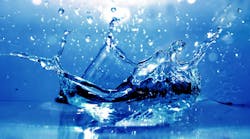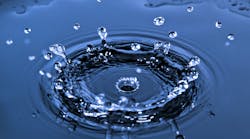The US Senate has passed the Rural Water Supply Act of 2005, which would require the Department of the Interior (DOI) to promote municipal and industrial water supply projects for small communities and rural areas in the West.
The bill would authorize $20 million per year for planning new water delivery infrastructure. It would establish a loan guarantee program within DOI’s Bureau of Reclamation to help communities finance new water projects and maintain existing systems. It also would expedite the Bureau’s appraisal and feasibility study process while helping communities identify the best ways to meet their specific water supply needs.
The House of Representatives does not have a similar bill pending, although the Resources Committee has held hearings on the need to increase federal aid for rural water supply projects in western states.
“Many rural communities lack the money or bonding capacity to pay for new water projects,” said Sen. Jon Kyl (R-Ariz.).
The Department of Agriculture has estimated that more than 1 million rural Americans lack running water and 2.4 million have critical drinking water needs, he said.
John Keys, Bureau of Reclamation commissioner, said, “This legislation establishes a much-needed program for projects that have been managed on an ad hoc basis in the past.”
Separately, the Bureau of Reclamation has identified nearly 1,000 potential hydroelectric and water supply projects in the Western US that have been studied but not constructed.
In a report to Congress, required by the Energy Act of 2005, the bureau conducted an inventory of Western water storage and hydroelectric projects.
Also, the bureau and the Department of Agriculture’s Natural Resources Conservation Service (NRCS) have agreed to coordinate efforts for efficient use and long-term sustainability of available water supplies for agriculture in the West.
Water Trust Fund Measure Introduced
The Clean Water Trust Act of 2005, introduced Dec. 15 by Congressman John J. Duncan, Jr. (R-Tenn.), Chairman of the House Water Resources and Environment Subcommittee, would provide more than $7 billion a year to help fund water and wastewater infrastructure projects.
The Act would establish a Clean Water Trust Fund to provide an assured source of funding to help the nation meet its water infrastructure needs. The bill is designed to provide funds to local communities to update their wastewater treatment facilities. It also would increase funding for improvements in infrastructure management, research, and the development of new technologies that will improve the nation’s ability to manage water resources.
In addition, the legislation is designed to provide funding to address water quality issues in critical regional waters, and to improve and protect wetlands and fisheries uses.
“Clean water is our country’s most valuable resource, and we must do everything possible to protect it,” said Congressman Duncan. “We know our Nation’s water infrastructure is getting very old. In fact, it is common in older systems to find pipes that were laid as far back as the 1800s.
“As Chairman of the House Water Resources and Environment Subcommittee, I am aware of the problems faced by municipal wastewater treatment agencies. I have held hearings on this issue, and I have heard over and over from our utilities that we need this legislation to protect our clean water supply,” Duncan said.
Ken Kirk, Executive Director of the National Association of Clean Water Agencies, has long been a supporter of a trust fund to finance water infrastructure projects. He was pleased by Duncan’s bill.
“Chairman Duncan deserves tremendous credit for his commitment to an innovative and real-world approach to an issue that threatens the nation’s economy, public health and environment,” Kirk said. “The Clean Water Trust Act will help control sewer overflows, enhance fisheries and wetlands, encourage research, spur new technologies, enhance investment in small and rural utilities, and protect critical regional waters such as the Great Lakes, Chesapeake Bay and Gulf of Mexico.”
Bill Focuses on Lowering Water Usage for Energy Production
The Senate Energy and Natural Resources Committee has approved a bill directing federal laboratories to find ways to lower water demand for energy production in the West, making more water available for human use.
The Energy-Water Efficiency Technology Research, Development, and Transfer Program Act now goes to the full Senate. Principal sponsors were committee chairman Sen. Pete Domenici (R-N.M.) and Sen. Jeff Bingaman (D-N.M.).
The bill is designed to increase federal investment in water efficiency and supply technologies as a means to increase energy production capacity, lower the amount of water used in oil and gas production, and meet the increasing demand for water.
The Department of Energy’s national laboratories would seek ways to improve energy production and reduce energy demand through improved use of reclaimed waters.
The bill would authorize $5 million to launch the program in fiscal 2006.
President Signs “Water for the Poor” Act
The “Senator Paul Simon Water for the Poor Act of 2005” has been signed into law by President George W. Bush. The legislation, authored by Congressman Earl Blumenauer (D - Ore.) and Senate Majority Leader Bill Frist (R - Tenn.), will strengthen American efforts to expand access to clean water and sanitation for millions of people in the developing world. The bill was approved by the U.S. Senate by unanimous consent on November 16th, and by the U.S. House of Representatives on November 7th, by a vote of 319 - 34.
“Not only is this bill the right thing to do, it recognizes that what we do abroad affects our security, our jobs, our health, and our way of life,” Blumenauer said shortly after the bill’s passage.
The Act establishes providing affordable and equitable access to water and sanitation as a major objective of United States foreign policy. The new law directs the Secretary of State to develop a strategy with specific timetables, benchmarks, and goals to bring together water programs across the federal government, to integrate water and sanitation into other development programs, and to meet the commitment made by the United States and 185 other countries to halve the percentage of people without access to safe water or sanitation by 2015.
It is designed to ensure that water and sanitation assistance is focused on the places with the greatest need, including efforts to build developing world capacity so recipients do not remain dependant on U.S. assistance, and sets policy to ensure that water and sanitation assistance is cost-effective.
H.R.1973 received broad bipartisan support in Congress. In the House, the bill was cosponsored by over 100 bipartisan members. The title of H.R. 1973 honors the late Senator Paul Simon (D-Ill.), who was an early champion of safe drinking water and sanitation around the world.
Parking Lot Sealants Examined as Pollution Source
In early December, the Water Environment Federation sponsored a Congressional briefing on recent studies by the USGS National Water-Quality Assessment (NAWQA) that identified sealcoating, the black, shiny surface often applied to asphalt pavement, as a significant and previously unrecognized source of extremely elevated concentrations of polycyclic aromatic hydrocarbons (PAHs) in streams.
Runoff from parking lots sealed with one type of sealcoat, coal tar-based sealant, had PAH concentrations 65 times higher than concentrations in runoff from unsealed parking lots.
PAHs are suspected human carcinogens and are toxic to aquatic life. Biological studies conducted by the City of Austin, TX, found a loss of species and decreased numbers of organisms at the PAH concentrations seen in Austin streams and observed these effects at sites downstream from the points where sealed parking lot runoff enters the streams.
Because sealants are used nationwide and the concentrations of PAHs in lakes and reservoirs across the country are increasing, this information raises important local and national policy questions about the use of sealants and methods to prevent contaminated runoff from reaching urban water bodies. Based on these studies, the City of Austin Council has banned the use of coal-tar sealants.
For additional information go to the USGS webpage for the National Water Quality Assessment Program at http://water.usgs.gov/nawqa/asphalt_sealers.html
Groundwater Group Warns Rural Homeowners about Arsenic
The American Ground Water Trust (AGWT), Concord, N.H., has issued a paper advising rural homeowners to be aware of arsenic in their drinking water. It noted that an EPA rule to slash the levels of arsenic allowed in drinking water, which takes effect Jan. 23, won’t protect many smaller rural water users.
EPA’s new arsenic standards cut the allowable amount of arsenic in water supplies from 50 ppb to 10 ppb. They do not cover individually owned wells and water systems that have fewer than 15 service connections or serve fewer than 25 people.
AGWT is a non-profit organization that that provides educational programs on the role of ground water in meeting America’s need for safe drinking water.
“We are hopeful this guide will help to fill a critical need because the responsibility for checking the quality of water obtained from private wells lies exclusively with the property owner,” said Andrew Stone, AGWT executive director. “There are no regulatory agencies or community organizations that have any oversight private well authority under the new rules.”
The guide explains the geologic origins of arsenic, its occurrence in ground water, arsenic related health issues and methods to remove or reduce arsenic levels. Although many U.S. regions have natural occurrences of arsenic, drinking water contamination can also be caused by human activities such as mining, metal smelting and pesticide usage or from man-made products such as wood preservatives, paints, drugs, dyes and soaps. WW


